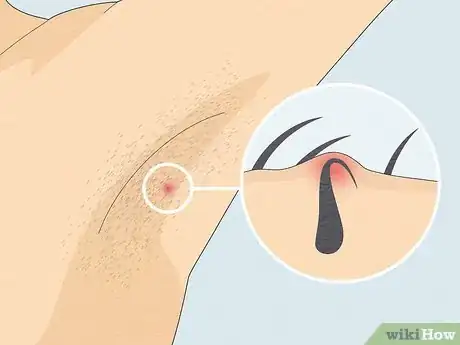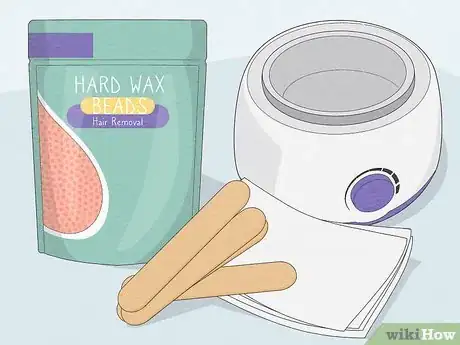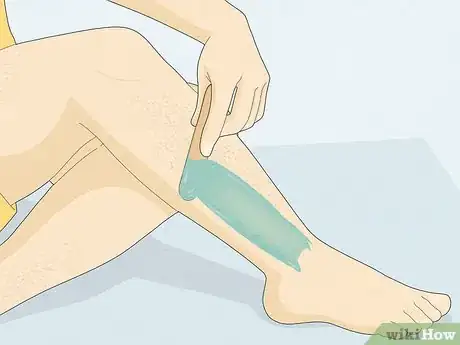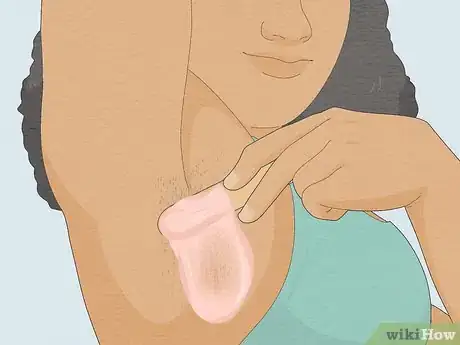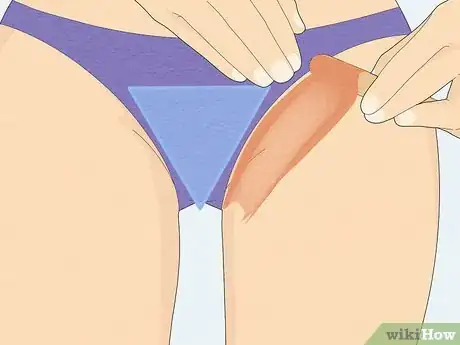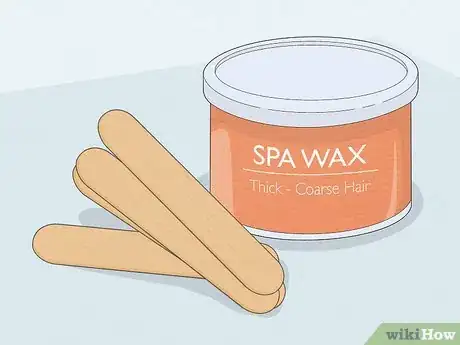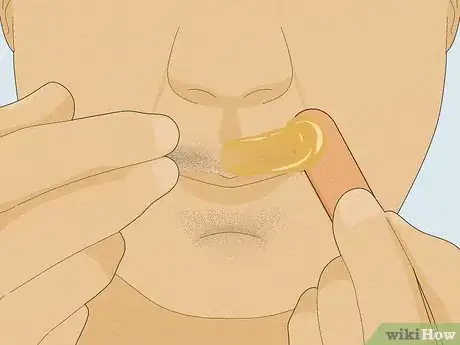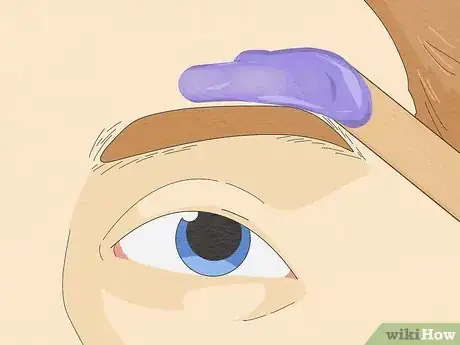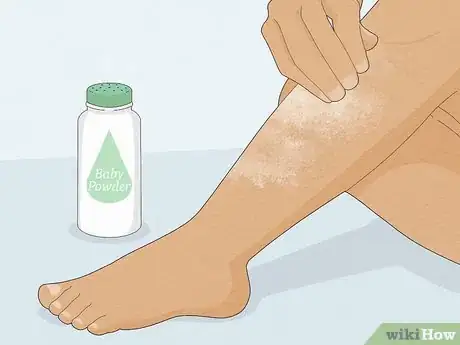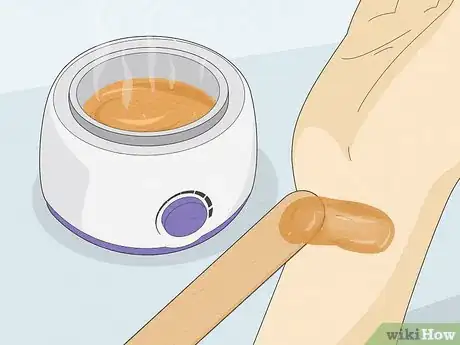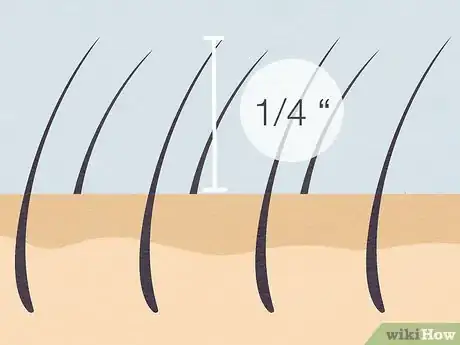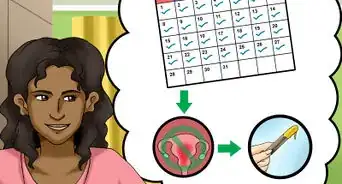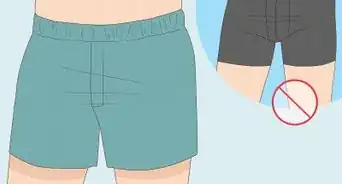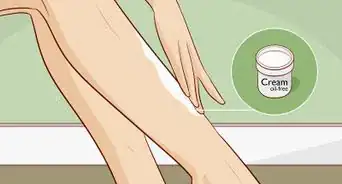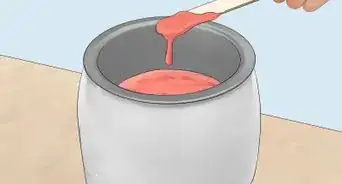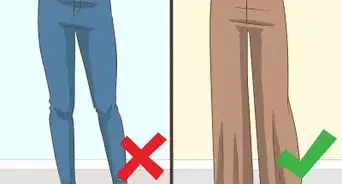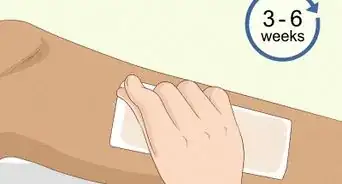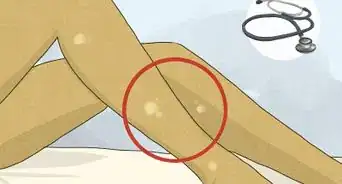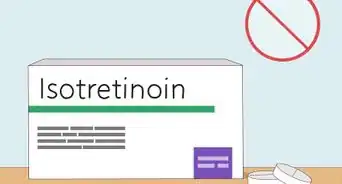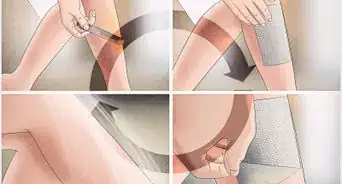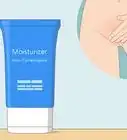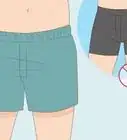This article was co-authored by Mohiba Tareen, MD. Mohiba Tareen is a board certified Dermatologist and the founder of Tareen Dermatology located in Roseville, Maplewood and Faribault, Minnesota. Dr. Tareen completed medical school at the University of Michigan in Ann Arbor, where she was inducted into the prestigious Alpha Omega Alpha honor society. While a dermatology resident at Columbia University in New York City, she won the Conrad Stritzler award of the New York Dermatologic Society and was published in The New England Journal of Medicine. Dr. Tareen then completed a procedural fellowship which focused on dermatologic surgery, laser, and cosmetic dermatology.
There are 11 references cited in this article, which can be found at the bottom of the page.
wikiHow marks an article as reader-approved once it receives enough positive feedback. In this case, 100% of readers who voted found the article helpful, earning it our reader-approved status.
This article has been viewed 525,085 times.
Waxing is an effective method of removing unwanted hair in both large and small areas. Waxing is one method of depilation, which means that the entire hair shaft is removed from below the skin's surface. It is one of the most effective methods for temporary hair removal. There are many types of waxing techniques, but warm waxing is more effective than most other waxing techniques and is usually performed in a salon. It's not hard to learn how to do it at home - just be careful not to make the wax too hot!
Things You Should Know
- Prepare the wax according to the instructions on the packaging.
- Use the wooden stick provided or a clean popsicle stick to apply the wax to a patch of skin in the direction of the hair growth.
- Place a cloth strip on top of the wax and press it down firmly by stroking it in the same direction as the hair growth.
- Wait approximately 10 seconds, then rip the cloth from the skin in the opposite direction of the hair growth.
Steps
Waxing Body Hair
-
1Avoid ingrown hairs. You can avoid ingrown hairs by regularly exfoliating and moisturizing your skin in the weeks before and after the waxing session.
- Use a body scrub, loofah or washcloth to exfoliate your skin, or make your own exfoliating body scrub using sugar or salt.[1]
- Follow up with a lightweight moisturizing lotion -- if your skin feels sensitive after the wax, make sure it is color and fragrance-free.
-
2Gather the necessary waxing supplies. The first step is to buy an at-home waxing kit or make your own sugar wax.[2]
- There are many types of home waxing kits on the market -- the two major options are regular waxing kits (where cloth strips are used to pull the wax from the body) and hard waxing kits (where the wax itself dries and can be pulled off without the need for strips).
- Regular wax is perfect for legs and underarms, while hard wax works best on the coarse hair in your bikini area.
- Prepare the wax according to the instructions on the packaging. Many waxes can simply be melted in the microwave.
- If the area you want to wax currently has any pimples, infections, or open sores, hold off for now. Waxing could irritate your skin and make these issues worse.[3]
Advertisement -
3Wax your legs. Before you begin waxing your legs, wash them in warm water to open the pores and make the hair easier to remove. Waxing is also more effective on freshly washed skin.[4]
- When the wax is ready, use the wooden stick provided (or use a clean popsicle stick) to apply the wax to a patch of skin in the direction of the hair growth.
- Place one of the provided cloths on top and press it firmly into the wax by stroking it in the same direction as the hair growth.
- Wait approximately 10 seconds, then rip the cloth from the skin, in the opposite direction to the hair growth. Try to do this in one fluid movement, keeping your hand close and parallel to the skin. Don't try to pull the strip up, as this could bruise or irritate the skin.
- Repeat this process all over the leg, taking care not to apply wax to the same area twice (this is very irritating on skin). When you're done, rinse your legs in cool water (not hot) to remove any traces of wax.
-
4Wax your underarms. The process for waxing underarm hair is almost identical to waxing your legs. However, removing underarm hair is a little more awkward (as you can only use one hand) and painful (so you may want to take a painkiller or use some numbing cream first).[5]
- Before waxing, scrub your underarms clean with a loofah, soap and warm water. This will help to soften the skin and open the pores, making waxing less painful.
- When you're ready, apply the hot wax, stroking it on in the same direction as the hair growth. Your underarm hair grows in two directions so make sure you wax this area in two stages against the direction of hair growth.
- Put your hand behind your head and stretch your arm back. Press a cloth strip over the hot wax, using firm strokes in the direction of the hair growth. Make sure to leave a little piece of loose cloth at the top of the strip, as this will allow you to grasp it firmly.
- After ten seconds, quickly rip the cloth from the skin in the opposite direction to the hair growth. If this movement feels a little awkward to do one-handed, ask a close friend to help you.
- Repeat the process with any remaining hair on that armpit, then do the same on the other side. Wash your armpit with cool water to remove any remaining wax and avoid using any deodorants or body sprays over the next few hours.
-
5Wax your pubic hair. Waxing the hair around your bikini line and pubic area can be a little bit scary, but the process is more or less the same as other types of waxing. Just be sure to get a waxing kit designed specifically for this area and remember that hard wax is recommended, as it sticks to coarse hair better.[6]
- Before you begin, you will need to decide how much hair you want to remove. Do you just want to remove the hair outside your bikini line? Do your want to make a triangle? A landing strip? If you like, you can give yourself a Brazilian (removing all the hair) but this can be quite tricky and it's recommended that you go to a professional.
- Next, wash the skin around the bikini line, as this will help to make the waxing less painful. If the hair is long, trim it with a safety scissors until it's about 1⁄4 inch (0.6 cm) in length.
- Waxing your bikini line will need to be done while lying down, so you can access all areas. Try laying a towel across your bed so you can be comfortable and avoid getting wax on the covers. It might also be helpful to prop a mirror nearby, so you can see exactly want you're doing.
- Lie down on the bed, propping your head up with a pillow so you can look down while you work. Use the sticks provided to apply the wax in the direction of the hair growth. If you're using hard wax, wait 10 to 15 seconds for it to harden. If you're using regular wax, rub the cloth strips firmly onto the wax.
- Pull the skin taut with your free hand, then grab the edge of the cloth or the hardened wax and rip it off in a single fluid motion in the opposite direction to the hair's growth. Try to pull the wax across rather than up, as this is less painful and will cause less irritation.
- Work your way around the bikini line, avoiding going over the same skin twice. You can use a tweezers to pluck out any missed hairs at the end. When you're done, you can apply a little baby oil to soothe the area and get rid of any wax residue. Avoid using soap or shower gel around this area for the next 24 hours, as recently waxed skin is easily irritated.
Waxing Facial Hair
-
1Gather the necessary waxing supplies. When waxing the skin on your face, it's very important to use a wax kit that's specifically designed for removing facial hair.
- This is because the skin on your face is extra sensitive and can easily become irritated if the wrong type of wax is used.
- Men should use a facial wax designed for coarser hair, as their facial hair is thicker and more difficult to remove than women's.
-
2Wax your upper lip. Waxing your upper lip is a relatively easy process, similar to other types of waxing. It is one of the most common areas for women (and men) to wax at home.[7]
- If you like, you can use wax strips that will remove upper lip hair without the need for hot wax -- these are relatively cheap, but not as effective as they don't grab onto the hair as well. Just follow the directions on the packaging to use.
- If you're opting to use regular wax, use a cream rather than a honey wax, as these are less sticky and easier to control than honey waxes.
- Wash your upper lip area (and remove any traces of make-up) and dry thoroughly. Apply the warm wax onto one half of your upper lip, tracing carefully along the lip line. Pressing your tongue against your upper lip can help to extend the skin and make the job easier. Make sure to apply the wax in the direction of the hair growth.
- Place the cloth strip over the wax, stroking it on in the direction of the hair growth. Wait ten seconds for the wax to cool slightly, then stick your upper lip between your teeth to pull the skin taut (this is important).
- Grasp the edge of the strip and quickly pull off the wax strip. Remember to pull your hand across rather than straight up. Press your hand against the waxed area for a few seconds to help with the pain.
- Repeat the process on the other side of your lip, then use a tweezers to clean up any stray hairs.
-
3Wax your eyebrows. Waxing your own eyebrows at home is a little trick and usually not recommended for beginners -- this is due to the fact that you are working with hot in the sensitive eye area. In addition, the results are potentially disastrous if you take off half an eyebrow! However, if you definitely feel comfortable with waxing your own eyebrows at home, here's how you do it:[8]
- Use a cream wax that you heat up in a wax pot, as these types of waxes are the most gentle on sensitive skin. Clean and dry the eyebrow area fully.
- Apply the warm wax onto the underside of the first eyebrow, tracing carefully in order to get the shape that you want (you can consult an eyebrow shaping guide here). Make sure to apply the wax in the direction of the hair growth (away from your nose).
- Place the cloth strip over the wax, stroking it on in the direction of the hair growth. Wait ten seconds for the wax to cool slightly, then use one hand to pull the skin of the eyebrow taut and the other to grasp the edge of the cloth.
- Quickly pull off the wax strip in the opposite direction to the hair growth. Remember to pull your hand across rather than straight up. Press your hand against the waxed area for a few seconds to help with the pain.
- Repeat this process with the other eyebrow, then use a tweezers to clean up any stray hairs. You can either use wax or tweezers to remove any stray hairs between your brows.
Waxing Safely and Effectively
-
1Use baby powder. A good tip to make your waxing session more effective is to sprinkle a little baby powder on your (clean) skin before waxing.[9]
- The baby powder soaks up any moisture or oil from the surface of your skin and helps the wax to stick to the hairs better.
-
2Avoid burning yourself with the wax. It's important to get the temperature right, as burning yourself with hot wax is no fun at all!
- Once you've melted the wax, test the temperature by applying a little to the inside of your wrist. The skin here is very sensitive, so if it feels okay, the wax should be at a safe temperature to apply to the rest of your body.
- However, it's important that the wax is not too cold either, otherwise it won't spread properly!
-
3Make sure hair is long enough before you attempt to wax it. In order for hair to adhere to the wax and be effectively removed, hair must be at least 1⁄4 inch (0.6 cm) to 1⁄2 inch (1.3 cm) in length.[10]
- Therefore, you should avoid shaving or using any other hair removal methods in the week or two running up to your waxing session. It may be hard to resist -- but you'll get a much smoother result in the end.
- You also need to be wary of hair that's too long -- use a safety scissors to trim long hair to about 1/2 on inch in length for more efficient waxing.[11]
-
4Don't wax the same area twice. Waxing the same area twice can be very painful and even damaging to the already-sensitive skin.[12] So if you notice any hairs that you missed, just use a tweezers to pluck them out instead.
Community Q&A
-
QuestionWhat can I do to make it less painful?
 Community AnswerLook away when you are going to remove the strip, and continue breathing. Some people tend to hold their breaths.
Community AnswerLook away when you are going to remove the strip, and continue breathing. Some people tend to hold their breaths. -
QuestionWhen I apply wax on my skin, the wax dried instantly and did not spread properly. Why?
 Community AnswerMaybe it was not warm enough. Try warming it up more.
Community AnswerMaybe it was not warm enough. Try warming it up more. -
QuestionIs there a way to do it painlessly?
 Community AnswerIt won't be entirely painless, as you will be ripping the hair follicle itself, which will likely cause at least some degree of discomfort. Topical numbing treatments, such as creams, could be used on the legs and arms for an unconventional option. Ice could be used to numb smaller areas. If the wax is applied and removed well, it will lessen irritation and discomfort.
Community AnswerIt won't be entirely painless, as you will be ripping the hair follicle itself, which will likely cause at least some degree of discomfort. Topical numbing treatments, such as creams, could be used on the legs and arms for an unconventional option. Ice could be used to numb smaller areas. If the wax is applied and removed well, it will lessen irritation and discomfort.
Warnings
- It is very important not to have the wax too hot to avoid burning the skin. Test the wax on your wrist to make sure.⧼thumbs_response⧽
- Overheating the wax should be avoided as it causes the wax to deteriorate, affecting its quality and making it difficult to remove from the skin. This may break the hair rather than remove it from the dermal papilla. Also the overheating is a fire hazard and will increase the fire risk.⧼thumbs_response⧽
- Caution needs to be exercised in people using oral retinoids. Waxing should not be performed until treatment with these medications has been stopped for at least 6 months to 1 year. Waxing whilst taking these medications may cause tearing of the skin and possible scarring. Individuals using topical retinoids should stop the medication 3-4 weeks prior to waxing to avoid skin injury and soreness. This is because the retinoid thins the skin to exfoliate and correct excessive pustules and papules.⧼thumbs_response⧽
- Waxing should not be performed on skin that is irritated, sunburned or broken. Do not wax areas multiple times during a session.⧼thumbs_response⧽
- Side effects from an incorrect method of waxing include: pain, folliculitis, scarring, hyperpigmentation, hypopigmentation, and ingrown hairs.⧼thumbs_response⧽
References
- ↑ https://www.aad.org/public/skin-hair-nails/skin-care/exfoliation
- ↑ https://www.liveabout.com/sugaring-hair-removal-recipe-p2-1717104
- ↑ Mohiba Tareen, MD. Board Certified Dermatologist. Expert Interview. 26 March 2020.
- ↑ https://www.liveabout.com/how-to-leg-wax-just-like-the-pros-1717201
- ↑ https://www.self.com/story/how-to-wax-at-home
- ↑ https://www.goodhousekeeping.com/beauty/anti-aging/a32818/bikini-wax-tips/
- ↑ https://www.liveabout.com/how-to-wax-your-upper-lip-1717145
- ↑ https://www.liveabout.com/how-to-wax-eyebrows-at-home-1717146
- ↑ https://www.telegraph.co.uk/beauty/body/leg-waxing-how-to-properly-remove-hair/
About This Article
If you want to wax away body hair, wash the area in warm water to open the pores and make the hair easier to remove. Heat the wax according to the packaging directions, then use a flat wooden stick to smooth the wax onto your skin in the same direction as your hair growth. Press a thin cloth over the softened wax you just applied, then wait about 10 seconds and quickly rip the cloth away from your skin in the opposite direction as your hair growth. Try to do this in one fluid motion, even if it hurts! Keep reading to learn how to wax your facial hair!
